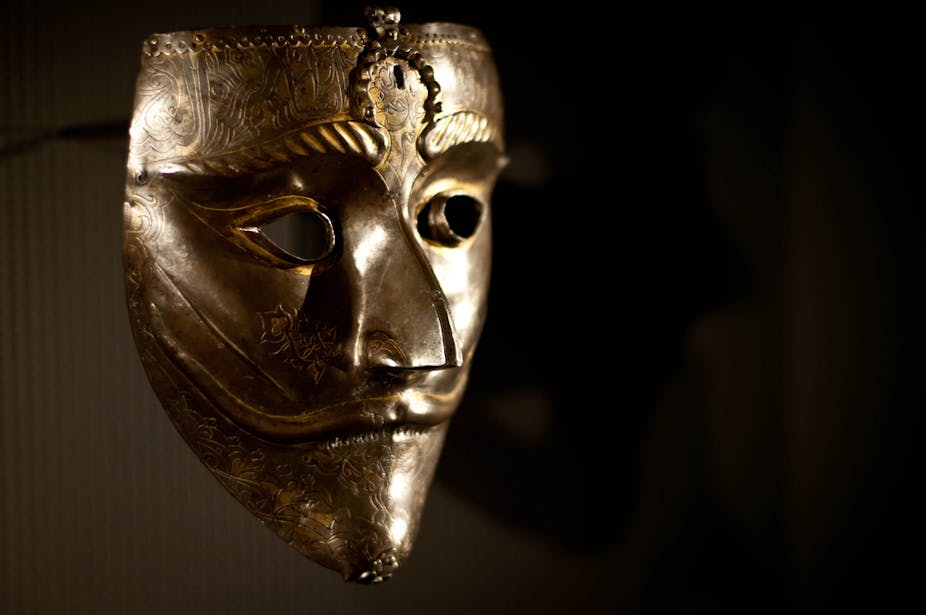Measurement determines estimation; estimation determines calculation; calculation determines comparison; comparison determines victory.
So wrote Sun Tzu in The Art of War 2,000 years ago.
Since that time his quantitative approach to decision-making has become standard across the whole of government. Defending a decision to give A$450,000 to bring the Rolling Stones to Adelaide, Premier Jay Weatherill recently asserted: “[we] get, on really conservative estimates, a A$10 return for every dollar we put in”.
Everything, it seems, comes down to statistics or, as the Australian Productivity Commission likes to call it, “evidence”. The metronome-regular collapse of corporations in circumstances of financial malfeasance and, in 2008, most of the global banking sector, has done little to dampen our enthusiasm for figures.
Truly this is the Age of Numbers, and calls for quantitative proofs of value accompany the announcement of almost every public policy.

Culture is a relative latecomer to this numbers game. The first significant text was probably Baumol and Bowen’s Performing Arts: the Economic Dilemma in 1966. Today, researchers such as Australia’s David Throsby run sophisticated econometric projects on both culture’s production data (on artists’ earning capacity) and its consumer effects (by using the latest contingent valuation methods).
Figures such as these say a great deal about the extent and diversity of culture’s social and economic impact, supplementing the Arts and Culture satellite accounts put out by the Australian Bureau of Statistics.
But does any of this tell us about the value of culture as culture rather than as a substitutable economic good with multiplier effects?
This is sometimes referred to, rather lamely, as “the problem of intrinsic value”. In an influential report for the DEMOS foundation in 2004, policy analyst John Holden noted caustically:
with an ever-growing body of evidence we seem to have lost sight of two things: one, that data is not knowledge; and two, that even the best objective data fails to account fully for why culture should be funded. The value of culture cannot be adequately expressed in terms of statistics. Audience numbers and gallery visitor profiles give an impoverished picture of how culture enriches us. Current forms of impact measurement are necessary, and they need to be improved, but they can never be sufficient.
We need to add a qualitative dimension to quantitative measures of value, not only to provide different forms of proof but to find a more meaningful way to talk about culture per se.
As Premier Weatherill’s remark about The Rolling Stones shows, some “evidence” only takes us away from what we need to discuss. That’s especially true for those activities that have a quality of aesthetic complexity we associate with the term “art”, as against those more generally accessible we think of as “entertainment”.

The two categories are not absolute, but they reflect different ways we respond to culture. Art has about it a quality of intractable presence that to some extent carries its own justification. By contrast, entertainment is defined by its acknowledged purpose and while it may do many things, it is the entertaining function it must address first if it is to be successful.
You could say, bad art is still art, but bad entertainment is just bad.
The general dimension of culture lends itself to aggregate measurement, to social and economic indicators of value. The singular dimension requires authoritative judgement, and expert opinion remains the standard means of assessment for culture-as-art. Both types of evidence are important.
A five-star write-up of a Paul Kelly CD is no guide to its broader social uptake. Likewise, you can’t jump from a set of benchmarks to qualitative effects. No amount of knowing how well a book has sold will tell you whether it’s worth reading.

Expert opinion has undergone a hammering in recent decades, however. Howard-era anti-elitism and widespread use of the internet have made it more difficult to discern (in others) and to assert (for oneself). Hence our fixation on tables and charts, hoping that numbers will do what experts can’t: provide a totally persuasive point of view.
You only have to look at the climate change debate to see how misplaced this hope is. When the politics are against you, no amount of quantitative data will help. In fact, demands for numbers have become the refuge of the intellectual scoundrel, hiding in the sophistry of their endless manipulation.
For culture it is time to bring the two proofs of value into alignment. This is a problem for policy-makers especially. Like cats in a sack, quantitative and qualitative approaches have sat in political consciousness without usefully cooperating.
The quantitative approach in isolation breeds a free-marketeerism that tolerates no critical distinction making. I once suggested to a Treasury official that Australian TV programs should be subject to quality review; if they were found to be crap, they should be taken off the air no matter how many people watched them.

Qualitative approaches, by contrast, can lead to naïveté about structural processes, particularly among artists. As a theatre director who works mainly with Australian playwrights, I must deal with the impact not having a significant commercial sector has on attracting new writing talent to the art form. It’s as if our brains have been cleaved in two, leaving us unable to take a rounded view of cultural value.
So here’s a qualitative argument Premier Weatherill might consider next time he is asked about his Rolling Stones tour: they are a great band; and are critically acknowledged as such; they have a long history of providing fantastic music and soon, when they can no longer check their Zimmer frames through customs, that history will come to an end. South Australians deserve an opportunity to see them while they can, and will no doubt revel in it now that it has been provided.
If we are to assess whether this is a proper use of public money, then let’s talk about the value of culture – not just the extrinsic benefits culture can provide.

